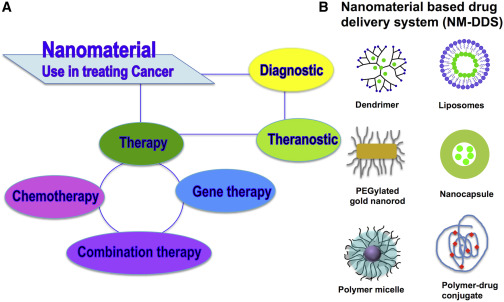A survey of the applications of nanocomposites:
The following survey of nanocomposite applications introduces you to many of the uses being explored, including:
Producing batteries with greater power output:
Researchers have developed a method to make anodes for lithium-ion batteries from a composite formed with silicon nanospheres and carbon nanoparticles. The anodes made of the silicon-carbon nanocomposite make closer contact with the lithium electrolyte, which allows faster charging or discharging of power.
Speeding up the healing process for broken bones:
Researchers have shown that growth of replacement bone is speeded up when a nanotube-polymer nanocomposite is placed as a kind of scaffold which guides the growth of replacement bone. The researchers are conducting studies to better understand how this nanocomposite increases bone growth.
Producing structural components with a high strength-to-weight ratio:
For example, an epoxy containing carbon nanotubes can be used to produce nanotube-polymer composite windmill blades. This results in a strong but lightweight blade, which makes longer windmill blades practical. These longer blades increase the amount of electricity generated by each windmill.
Using graphene to make composites with even higher strength-to-weight ratios:
Researchers have found that adding graphene to epoxy composites may result in stronger/stiffer components than epoxy composites using a similar weight of carbon nanotubes. Graphene appears to bond better to the polymers in the epoxy, allowing a more effective coupling of the graphene into the structure of the composite. This property could result in the manufacture of components with higher strength-to-weight ratios for such uses as windmill blades or aircraft components.
Making lightweight sensors with nanocomposites:
A polymer-nanotube nanocomposite conducts electricity; how well it conducts depends upon the spacing of the nanotubes. This property allows patches of polymer-nanotube nanocomposite to act as stress sensors on windmill blades. When strong wind gusts bend the blades the nanocomposite will also bend. Bending changes the nanocomposite sensor’s electrical conductance, causing an alarm to be sounded. This alarm would allow the windmill to be shut down before excessive damage occurs.
Using nanocomposites to make flexible batteries:
A nanocomposite of cellulous materials and nanotubes could be used to make a conductive paper. When this conductive paper is soaked in an electrolyte, a flexible battery is formed.
Making tumors easier to see and remove:
Researchers are attempting to join magnetic nanoparticles and fluorescent nanoparticles in a nanocomposite particle that is both magnetic and fluorescent. The magnetic property of the nanocomposite particle makes the tumor more visible during an MRI procedure done prior to surgery. The fluorescent property of the nanocomposite particle could help the surgeon to better see the tumor while operating.
Dates of the Conference: May 22-23, 2019
Venue: Rome, Italy
WordPress: https://bit.ly/2HyNG3q
Blogger: https://bit.ly/2JTyTFV
Facebook: https://bit.ly/2LNOvba
Twitter: https://bit.ly/2t5iGDa









